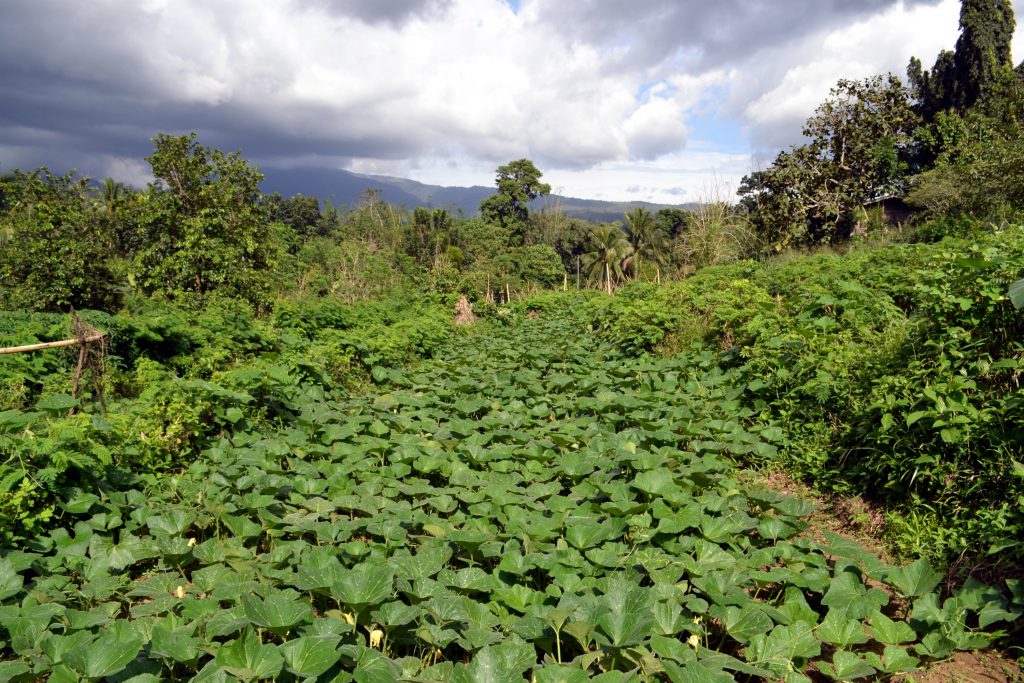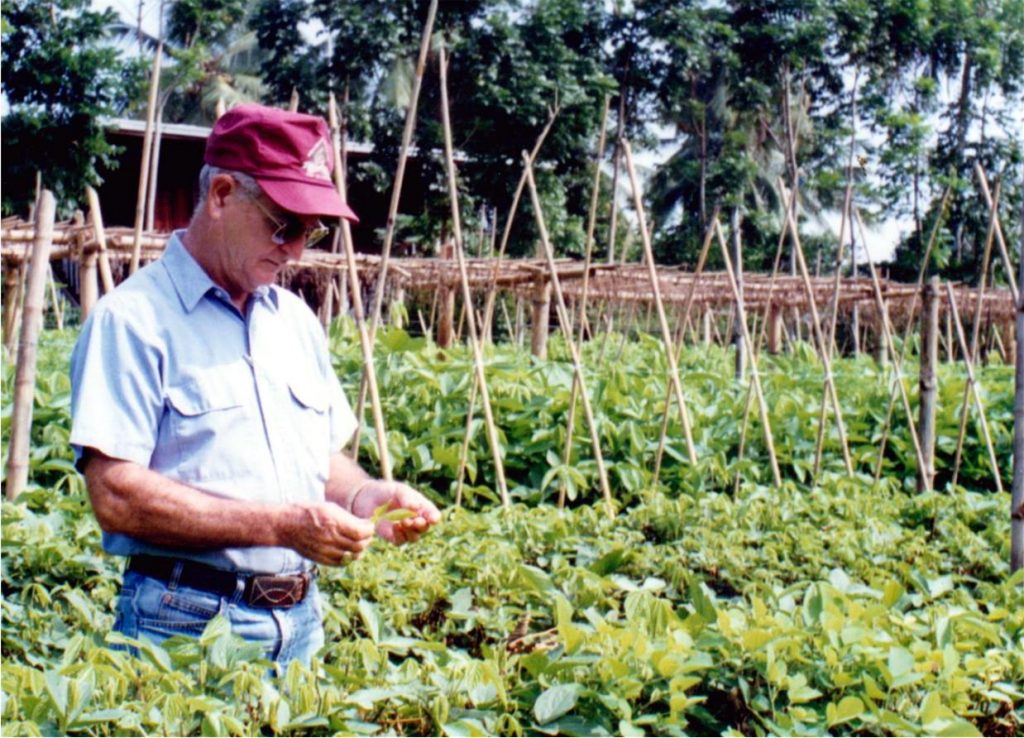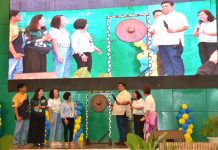Wouldn’t it be great if there’s a technology that can fight erosion, arrest hunger, encourages tree planting, and capture carbon emissions into the atmosphere?
The good news is: there is now such technology!

The Mindanao Baptist Rural Life Center (MBRLC), a non-government organization based in southern part of the Philippines, has developed a simple yet sustainable farming scheme that addresses those environmental woes that currently plagued the world.
“We call it Sustainable Agroforest Land Technology or SALT 3,” says Jethro P. Adang, the new director of the Davao-based MBRLC. “Actually, it is a modification of the internationally-known Sloping Agricultural Land Technology, which we now call as SALT 1.”
Created for a hectare farm, SALT 1 is a package technology on soil conservation and food production, integrating different soil conservation in just one setting. “Basically, SALT 1 is a method of growing field and permanent crops in 3-meter to 5-meter-wide bands between contoured rows of different nitrogen fixing trees and shrubs,” Adang explains.
The various nitrogen fixing trees and shrubs are thickly planted in double rows to make hedgerows. When a hedge is 1.5 to 2 meters tall, it is cut down to about 75 centimeters and the cuttings are placed in alley ways to serve as organic fertilizers.

SALT 2 is the first modification of the original SALT. In just one-half hectare farm, a farmer can raise goats (with a ratio of 12 does and one buck) along with agricultural crops. The upper half portion of the farm is planted to different crops while the lower portion is allotted to various legumes and forages. The manure is used as organic fertilizer for the forage garden and crops.
All three systems are geared towards upland farms. “About 60% of our total land area in the country has slopes of 18 degrees or more and these are classified by our government as uplands,” Adang says. “These uplands are continuously disturbed by people who are moving to these areas as lands in the lowlands are already saturated and occupied.”
Uplanders are referred to as among “the poorest of the poor” in the society since they survive below the poverty line level. The impoverished situation is reflected in their houses made of bamboo, tree bark and cogon thatch roofing. Their sources of water are either mountain springs or streams.
In terms of education, the upland farmer rarely finishes grade school. Studies show that he either drops out after the third grade or does not even attempt to enter school. His wife, like himself, fares no better.
Most uplanders belong to the category of “small farmers.” “The inhabitants are primarily farming families in dire poverty and insecurity,” said a study commissioned by the National Research Council Project. “Subsistence food production, rather than forestry, is their overriding priority.”
To think, the uplands are now touted as the “last frontier” of Filipino farmers. “Even if the Philippine government poured all of its resources, money, and talent in expanding the carrying capacity of the lowlands, it would still become all too clear that the next focus for rural development effort will have to be in the uplands,” wrote Charles Castro in his position paper, Uplands and Uplanders: In Search for New Perspective.
There are several reasons for such observation. “It is in the uplands were supplementary and additional food sources will be grown,” Castro surmised. “It is in the uplands which will give Filipinos temporary elbow room for the land shortage. It is in the uplands where landless rural people will find a new option in fighting rural poverty. It is in the uplands where alternatives for fossil fuel requirements may be produced. It is in the uplands where consequently new problem of tenure, social justice, and human rights will be fought, and it is in the uplands where the long-term viability of resources needed by the densely populated areas such as irrigation water, timber, and coastal and fishery resources can be established.”
Castro wrote his position paper in 1984 yet. And his prediction has now come into reality. In the 1970s, the average upland population density was 39 persons per square kilometer. A decade later, the population increased sharply to 119 persons per square kilometer. “There are more people now in the uplands than in recent decades,” Adang points out.
Most of the lowlanders-turned-upland farmers really don’t know much about upland farming. They cut the trees and employed the method of farming they used to practice in the lowlands. The result: soil erosion.

“The greatest problem man will encounter when forest trees are cut extensively without replanting and improper farming of fragile, sloping lands is soil erosion,” Adang says. “Soil is the result of the gradual weathering of plants, rocks and minerals. The topsoil is rich and fertile because of its organic matter content.”
Scientists say soil formation is a very slow process. In the humid tropics, a soil can be formed in as little as 200 years. But the process normally takes far longer. Under most conditions, soil is formed at a rate of one centimeter every 100 to 400 years, and it takes 3,000 to 12,000 years to build enough soil to form productive land.
“This means that soil is, in effect, a non-renewable resource,” says the UN Food and Agriculture Organization (FAO). “Once destroyed, it is gone forever.”
In the Philippines, the hilly agricultural lands under cultivation have lost about two-thirds of their valuable topsoil. In 1988, the Department of Environment and Natural Resources singled out 22 provinces of having “alarming” soil erosion rate. Both Batangas and Cebu had reportedly lost 80% to 85% of their topsoil to erosion.

“Soil erosion is an enemy to any nation – farm worse than any outside enemy coming into a country and conquering it because it is an enemy you cannot see vividly,” Rev. Harold Ray Watson, an American missionary who was the first director of MBRLC, pointed out when he received the Ramon Magsaysay Award for international understanding in 1985. “It’s a slow creeping enemy that soon possess the land. We must consider ourselves in a state of emergency, our topsoil is all going…”
The environment department has traced the soil erosion problem partly to denudation of the country’s forest cover. “We only have less than a third of the forest cover we had at the turn of the 20th century,” said Senator Loren Legarda in a press statement which EDGE Davao obtained.
The country losses around 47,000 hectares of forest cover each year, according to Legarda. “Most of the country’s once-rich forest are gone,” said the FAO publication, Sustainable Forest Management. “Forest recovery, through natural and artificial means, never coped with the destruction rate.”
As uplands are devoid of forest cover, soil erosion continues unabated. Lester R. Brown, former head of the Washington, D.C.-based Worldwatch Institute, said that the immediate effects of soil erosion are economic but in the long run its ultimate effects are social.
“When soils are depleted and crops are poorly nourished, people are often undernourished as well,” Brown explained. “Failure to respond to the erosion threat will lead not only to the degradation of land, but to the degradation of life itself.” (To be concluded)






